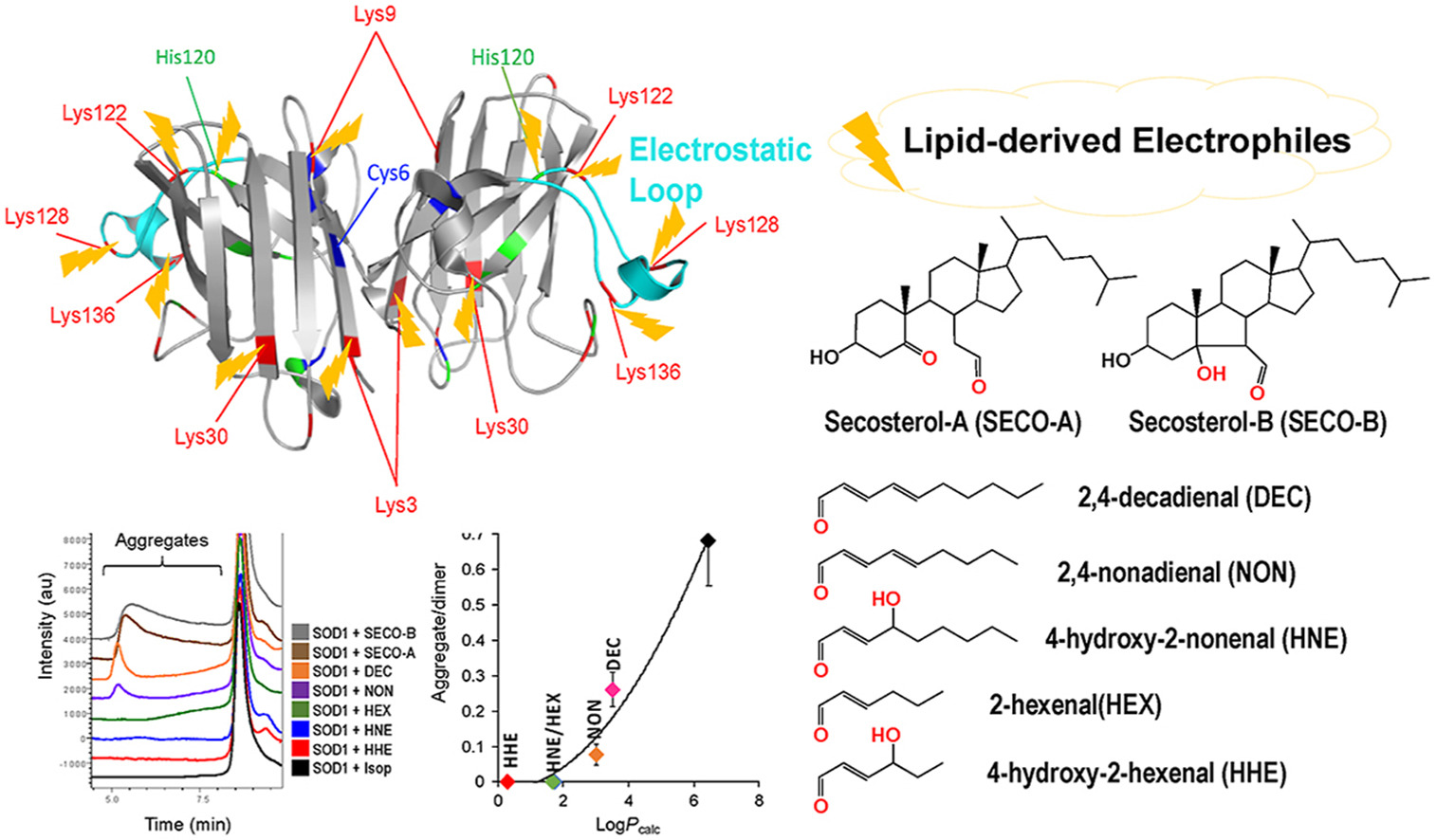Our research
Lipids have great diversity of structures and functions that go far beyond structural and energetic functions: they are indicators and regulators of important metabolic pathways; interact with proteins and other macromolecules promoting structural and functional changes; besides being targets of biological oxidation that generate a huge diversity of oxidized or modified lipids. We know these oxidations belong to the natural process of our metabolism, but they may increase as we age, and can happen in an acute and uncontrolled way causing irreversible damage to our cells leading to disease development.
Within this context, our group develops projects with the purpose of:
(i) mapping changes in the lipidome associated with the development of diseases and identifying potential biomarkers;
(ii) understanding how lipid modifications and oxidations in the central nervous system can lead to the development of neurodegenerative diseases, such as amyotrophic lateral sclerosis;
(iii) characterize chemical and biochemical mechanisms through which oxidized lipids affects cellular functions or modulate inflammatory processes;
(iv) create preventive and therapeutic strategies.
Ongoing projects
Lipidomic analysis and oxilipidomics
High-resolution Q-TOF mass spectrometers allow you to monitor and quantify thousands of lipid molecules simultaneously through non-targeted or targeted global analysis methodologies. Since 2016, the laboratory has been working on the development of sensitive and specific methodologies for quantitative characterization of lipids (non-oxidized and oxidized) by mass spectrometry. Our goal is to identify dysregulated lipid pathways and to screen for more accurate and specific disease markers. Ongoing projects seek to consolidate a robust platform for omic analyzes (lipidomic and oxy-lipidomic) through the establishment of quality control protocols, development of identification and quantification software, in addition to the development of strategies for data integration using bioinformatics tools. All analyses are being carried out on the CEPID-Redoxoma multiuser mass spectrometer.
Oxidized lipids, Redox mechanisms and inflammation
The oxidation of omega-3 and omega-6 fatty acids generates a massive diversity of bioactive oxygenated products, known as “lipid mediators”, with pro-inflammatory, anti-inflammatory, or pro-resolution activity. These products are generated by enzymatic reactions (lipoxygenases, cyclooxygenases, etc.) and non-enzymatic reactions (radical and non-radical reactive species such as singlet oxygen). The increase of pro-inflammatory mediators can induce/worsen chronic inflammations, while anti-inflammatory or pro-resolution mediators assist in the recovery and elimination of pathogens. Ongoing projects have the goal of characterizing structural and functional diversity of oxidized fatty acid-derived lipids and cholesterol generated through oxy-lipidomic analysis methodologies (LC-MS/MS; GC-FID e GC-MS) developed by the group.

Protein Modification and Aggregation induced by Lipids
Lipid oxidation generates reactive lipid products capable of modifying proteins, inducing the formation of high molecular weight aggregates. Modified and aggregated proteins can accumulate and form intracellular inclusions that are frequently seen in neurodegenerative diseases. Our group has developed studies to characterize protein modifications induced by reactive oxidized lipids. Recently, we demonstrated that cholesterol-derived aldehydes derived from cholesterol oxidation bind to specific regions of the SOD1 protein, inducing its aggregation (Dantas et al Redox Biol 2019 and Free Radic Biol Biomed 2020). Mutations and modifications in the SOD1 protein are associated with amyotrophic lateral sclerosis. We are currently investigating the mechanisms of lipid-mediated aggregation in cell models and conducting the screening of molecules capable of preventing aggregation.
Cell Death induced by Lipid Peroxidation and Antioxidant Defense Systems
Lipid peroxides affect the integrity and function of cell membranes. In particular, peroxidation of membrane lipids can induce irreversible damage that accumulates leading to cell death. Ferroptosis is a type of cell death that has received prominence due to its potential to contribute to tissue damage associated with diseases and also as a mechanism to induce tumor cell death. This type of death is induced by flaws in antioxidant protection mechanisms against lipid peroxides, which mainly include enzymes from the glutathione peroxidase family (GPx). The detailed research on the formation of lipid peroxides and how they are metabolized by cells is still at the beginning.
Examples of some ongoing projects:
Enzymatic mechanisms for detoxification of phospholipid and cholesterol peroxides;
Lipidomic studies of plasmalogen reactivity in mimetic and cellular models.
Synthesis and Characterization of Bioactive Oxidized Lipids
Unsaturated fatty acids, phospholipids and cholesterol, when oxidized, generate bioactive products with anti- or pro-inflammatory activity (lipid mediators). Our laboratory performs the synthesis, purification and structural characterization of oxidized products.


